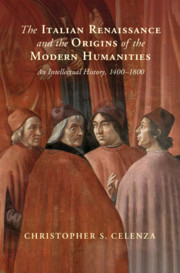Refine search
Actions for selected content:
38 results
3 - Disguised Authors
- from Part I - Relationships
-
- Book:
- The Epistles of John
- Published online:
- 17 December 2025
- Print publication:
- 08 January 2026, pp 76-94
-
- Chapter
- Export citation

The Epistles of John
- Origins, Authorship, Purpose
-
- Published online:
- 17 December 2025
- Print publication:
- 08 January 2026
9 - The Success of the First ‘Modern’ Banks: Scotland and the Thirteen Colonies, and Failure in France
-
- Book:
- The Capitalist Self
- Published online:
- 12 October 2025
- Print publication:
- 30 October 2025, pp 346-390
-
- Chapter
- Export citation
Chapter 7 - In the Hands of Frauds
- from Part III - Faking the Gods
-
- Book:
- Technologies of the Marvellous in Ancient Greek Religion
- Published online:
- 04 September 2025
- Print publication:
- 24 July 2025, pp 217-237
-
- Chapter
-
- You have access
- Open access
- HTML
- Export citation
Epilogue: Forging Exile
- from Part II - Becoming the Exile
-
- Book:
- Medieval Responses to Ovid's Exile
- Published online:
- 27 May 2025
- Print publication:
- 12 June 2025, pp 210-221
-
- Chapter
- Export citation
Constructing Provenance with Old Collections: The Case of Cumberland Clark
-
- Journal:
- International Journal of Cultural Property / Volume 31 / Issue 3 / August 2024
- Published online by Cambridge University Press:
- 28 March 2025, pp. 338-359
-
- Article
-
- You have access
- Open access
- HTML
- Export citation
6 - Peddling Propaganda: The Information Research Department and India
-
- Book:
- Spying in South Asia
- Published online:
- 12 September 2024
- Print publication:
- 12 September 2024, pp 124-152
-
- Chapter
- Export citation
The Textual Demiurge: Social Status and the Academic Discourse of Early Christian Forgery
-
- Journal:
- New Testament Studies / Volume 70 / Issue 3 / July 2024
- Published online by Cambridge University Press:
- 30 September 2024, pp. 307-323
- Print publication:
- July 2024
-
- Article
-
- You have access
- Open access
- HTML
- Export citation
Chapter 1 - Counterfeit Money
-
- Book:
- The Theology of Debt in Late Medieval English Literature
- Published online:
- 04 January 2024
- Print publication:
- 18 January 2024, pp 25-49
-
- Chapter
- Export citation
8 - The “Bloody Code” Diminished, 1822–1830
-
- Book:
- Execution, State and Society in England, 1660–1900
- Published online:
- 12 October 2023
- Print publication:
- 26 October 2023, pp 284-320
-
- Chapter
- Export citation
4 - The Proving Grounds
- from Part II - The Severing: Trial and Exile
-
- Book:
- Mercenaries of Knowledge
- Published online:
- 14 September 2023
- Print publication:
- 28 September 2023, pp 137-174
-
- Chapter
- Export citation
1 - Bacchides
-
- Book:
- Letters in Plautus
- Published online:
- 01 December 2022
- Print publication:
- 15 December 2022, pp 17-56
-
- Chapter
- Export citation
7 - A History of Violence
-
- Book:
- Corruption, Protection and Justice in Medieval Europe
- Published online:
- 12 October 2022
- Print publication:
- 24 November 2022, pp 153-173
-
- Chapter
- Export citation
9 - The Murder of Archbishop Engelbert
-
- Book:
- Corruption, Protection and Justice in Medieval Europe
- Published online:
- 12 October 2022
- Print publication:
- 24 November 2022, pp 197-213
-
- Chapter
- Export citation
8 - Weapons of the Not-So-Weak
-
- Book:
- Corruption, Protection and Justice in Medieval Europe
- Published online:
- 12 October 2022
- Print publication:
- 24 November 2022, pp 174-196
-
- Chapter
- Export citation
Chapter 3 - Reliable Bible
-
- Book:
- Does Scripture Speak for Itself?
- Published online:
- 06 October 2022
- Print publication:
- 06 October 2022, pp 76-114
-
- Chapter
- Export citation
5 - Recasting Financial Capitalism, 1796–1821
- from Part II - Preface
-
- Book:
- Impunity and Capitalism
- Published online:
- 08 September 2022
- Print publication:
- 15 September 2022, pp 177-214
-
- Chapter
- Export citation
Chapter 4 - English as a Language of Documentary Record
- from Part II - The Affordances of English
-
- Book:
- A New Literary History of the Long Twelfth Century
- Published online:
- 14 July 2022
- Print publication:
- 28 July 2022, pp 102-148
-
- Chapter
- Export citation
THE BILLY AND CHARLEY FORGERIES
-
- Journal:
- The Antiquaries Journal / Volume 102 / September 2022
- Published online by Cambridge University Press:
- 20 June 2022, pp. 447-469
- Print publication:
- September 2022
-
- Article
- Export citation

The Italian Renaissance and the Origins of the Modern Humanities
- An Intellectual History, 1400–1800
-
- Published online:
- 09 November 2021
- Print publication:
- 09 September 2021
